I toured a long-forgotten labyrinth under London's streets
Isobel van Hagen

Insider reporter tours the disused tunnel at Shepherd's Bush tube station.Isobel van Hagen/ Insider
- Shepherd's Bush Underground Station was opened in 1900 and was an immediate commercial success.
- One of the old tunnels in the station was later used as an underground shelter during World War II.
As someone who has lived in London for many years, I generally try to limit the amount of time I spend on the Tube — London's underground train system. While a convenient, quick way to get around, it can be hectic, noisy, and exceptionally busy.
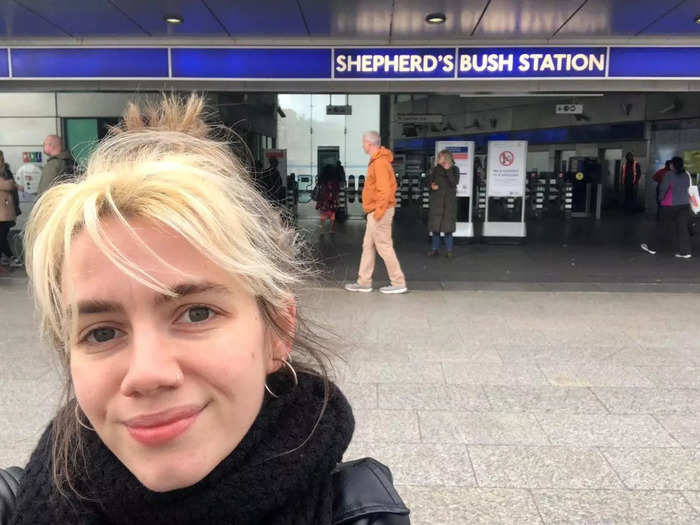
Shepherd's Bush underground station. Isobel van Hagen/ Insider
I spent more than an hour exploring disused underground tunnels at west London's Shepherd's Bush station. Some of the hidden tunnels have been opened to the public for the first time in 100 years.
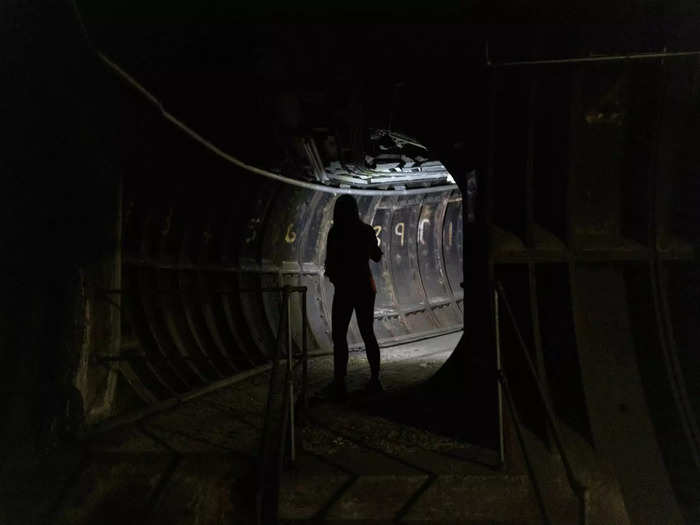
Hidden London tourist examining unused tunnels in the dark. London Transport Museum
I learned about the history of the hidden infrastructure, including its uses during World War II and how riding the underground turned from a "novel experience" 100 years ago into an everyday chore.
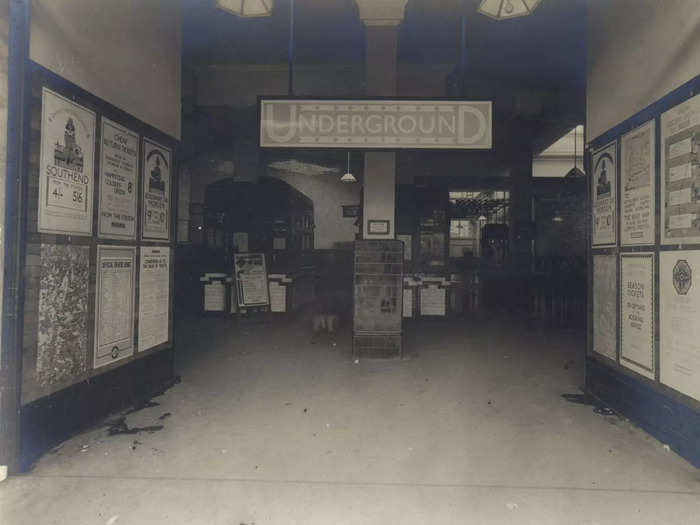
Booking hall, Shepherd's Bush underground station, Central line, seen from the station entrance, July 1928 TFL from the London Transport Museum collection
Through the London Transport Museum's "Hidden London" tours, I joined a group of about 10 people who were led past the barriers at Shepherd's Bush station. Our guides warned, "Don't tap your Oyster card!" — the contactless payment method for transport in London — as this was certainly not going to be a typical Tube journey.
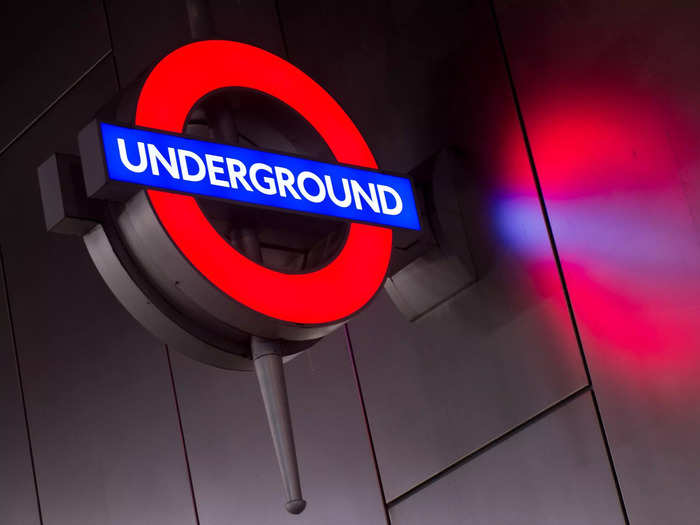
The Underground sign at Shepherd's Bush station. Ollie Millington/Getty Images
Standing at the top of the stairs, we learned about the history of the station, which opened in July 1900 as London's third deep-level railway. While the station has gone through several renovations since then, many of the decades-old tunnels are still there to "reveal layers of history," the guides said.
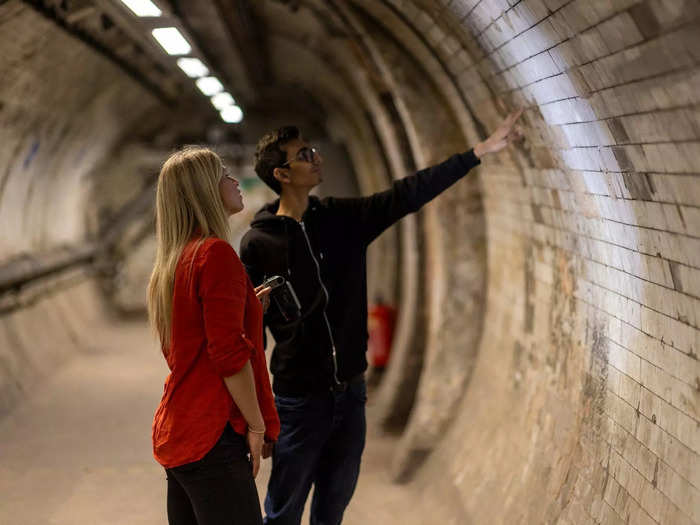
Hidden London tour members explore historic tunnels at Shepherd's Bush station. London Transport Museum
At the time, Shepherd's Bush station was the terminus of the new "Central London Railway" — now the bustling Central line. Its opening was extremely successful as the new travel hub provided transport from west London into the city's financial center.
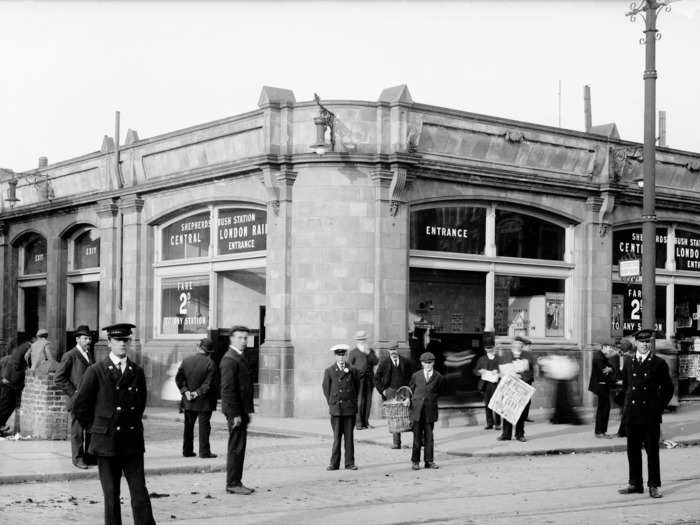
Central line employees informally posed for the camera at Shepherd's Bush Station in 1900. English Heritage/Heritage Images/Getty Images
The Central London Railway was nicknamed the "Twopenny Tube" — as a journey on the line cost two pence (about two cents) for a one-way ticket. Workers who traveled before 7:30 am, however, could pay two pence for a round-trip journey.
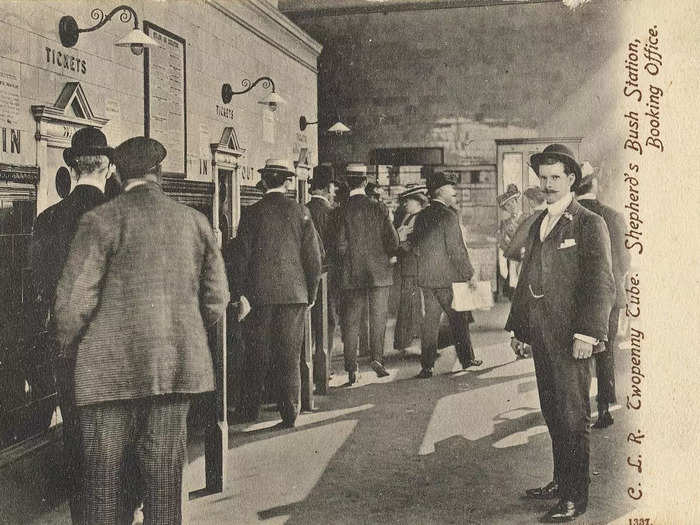
"Twopenny Tube" postcard showing the Booking hall and Shepherd's Bush Underground station, July 1928. TFL from the London Transport Museum collection
The station's early ticketing system was a precursor to today's Oyster card, as it allowed passengers to travel on both the underground and trams.
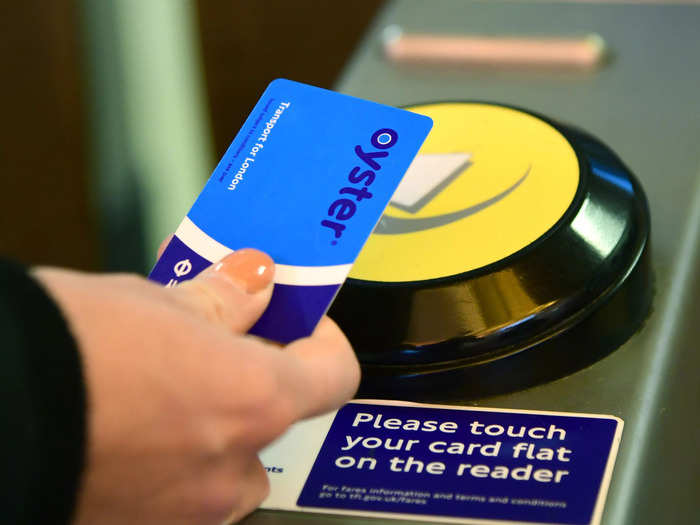
An Oyster card is used at a tube station in London. PA Images via Getty Images
We made our way down onto a train platform as trains rumbled along and commuters hustled by. At the end of the platform, a guide unlocked an unassuming door and we carefully walked up the stairs and over the tracks in a caged-in bridge while trains flew by underneath us.
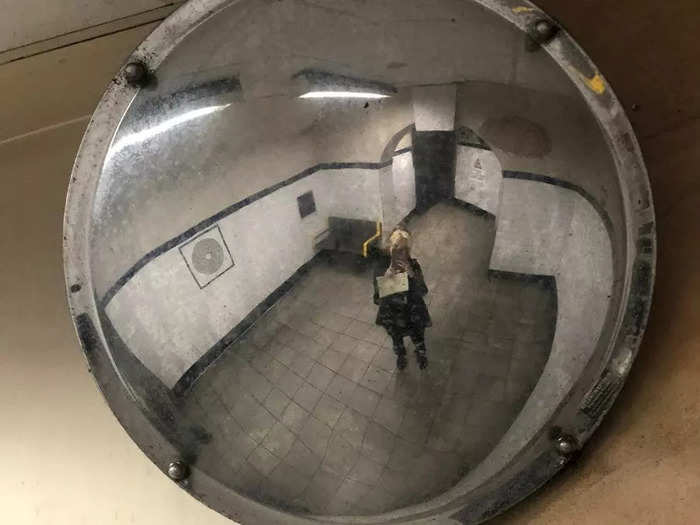
Heading below ground at Shepherd's Bush tube station. Isobel van Hagen/Insider
We entered an empty, grungy tunnel with curved walls that loomed over us. The guides explained that the line had been difficult to keep cool and passengers in the early 20th century would often complain about the smell.
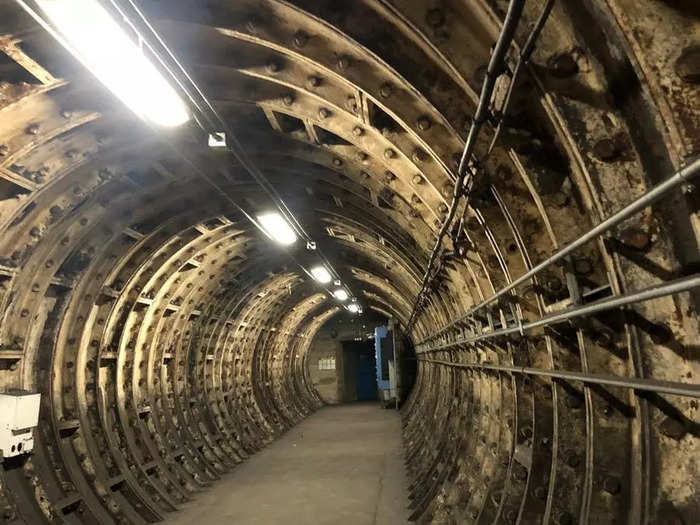
One of the many disused tunnels in Shepherd's Bush station. Isobel van Hagen/Insider
Various ventilation techniques were tried, including giant fans and pumping ozone into the underground. Not much has changed, one tour guide joked, as you get "a free sauna in the Central line even today."
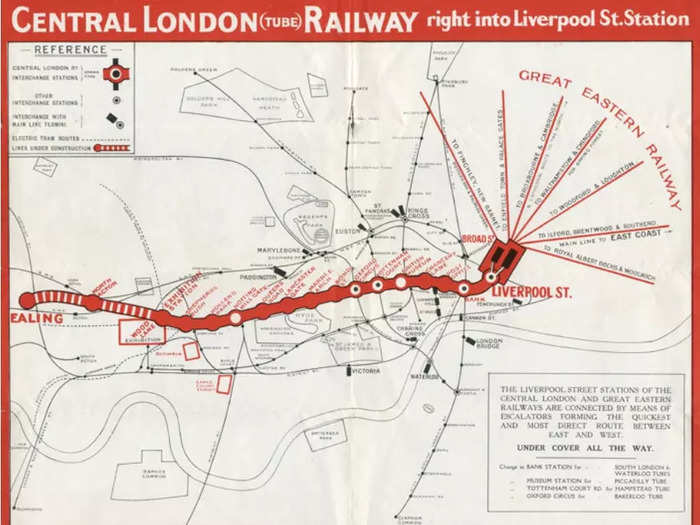
Pocket Central London Railway map, showing the new Liverpool Street terminus and the Ealing extension under construction, 1912. TfL from London Transport Museum’s collection
During World War II, one of the tunnels was converted into an air-raid shelter. Triple bunk beds were set up in the narrow tunnel, which could fit about 150 to 160 people at a time. Those sheltering from bombs dropped on London Hitler's Luftwaffe were served refreshments — "importantly, tea," said a guide.
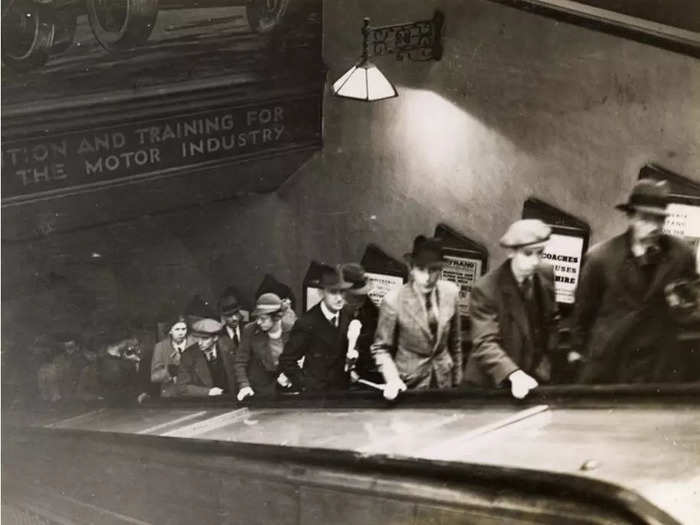
Escalators at Shepherd’s Bush station in 1936. TfL from London Transport Museum’s collection
As we continued through the winding dark tunnels, we could still hear the announcements warning modern-day passengers to "mind the gap between the train and the platform edge," creating a fascinating contrast between old and new.
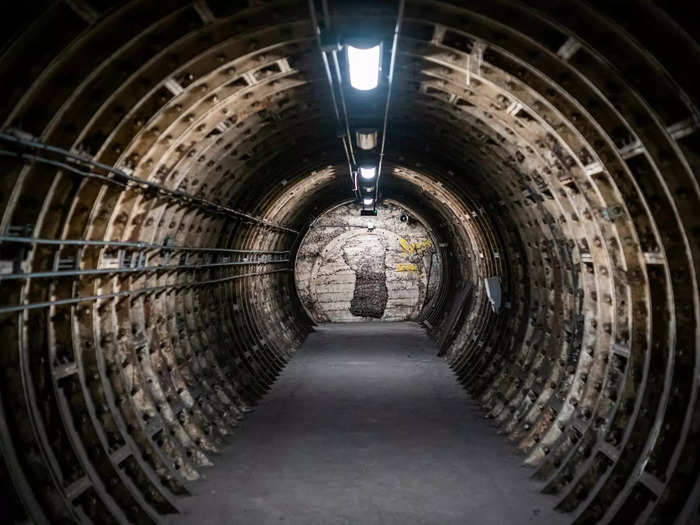
Old tunnel infrastructure at Shepherd's Bush station, which was opened over 100 years ago. London Transport Museum
We learned about other historic features of underground travel — like the still-visible white glass tiling that was once used to reflect as much light as possible in the dim station. And that, in the early days of the tube, each train carriage had a guard that would call out the names of the stops for passengers.
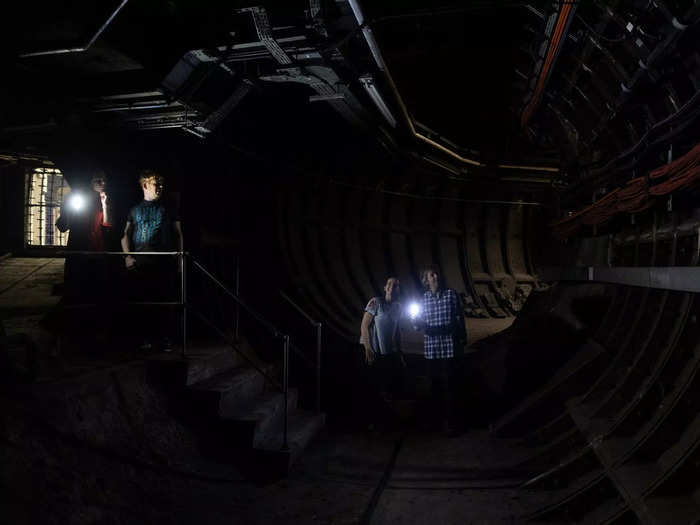
People with flashlights survey the old tunnels at Shepherd's Bush. London Transport Museum
In the final part of the tour, we stood in an unused tunnel that was engineered for ventilation purposes. Peering through the openings in the tunnel, we saw trains rushing by and passengers — confused by the group of people peering out at them from behind the wall — waving at us.
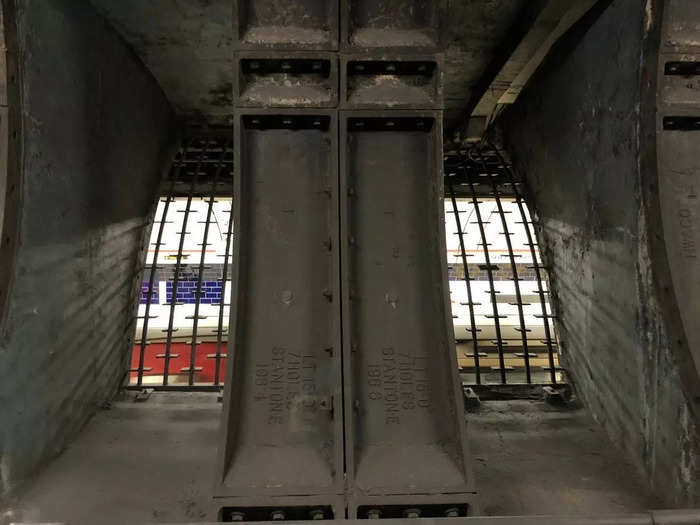
Central line train seen through old ventilation tunnel at Shepherd's station Isobel van Hagen/Insider
Popular Right Now
Advertisement